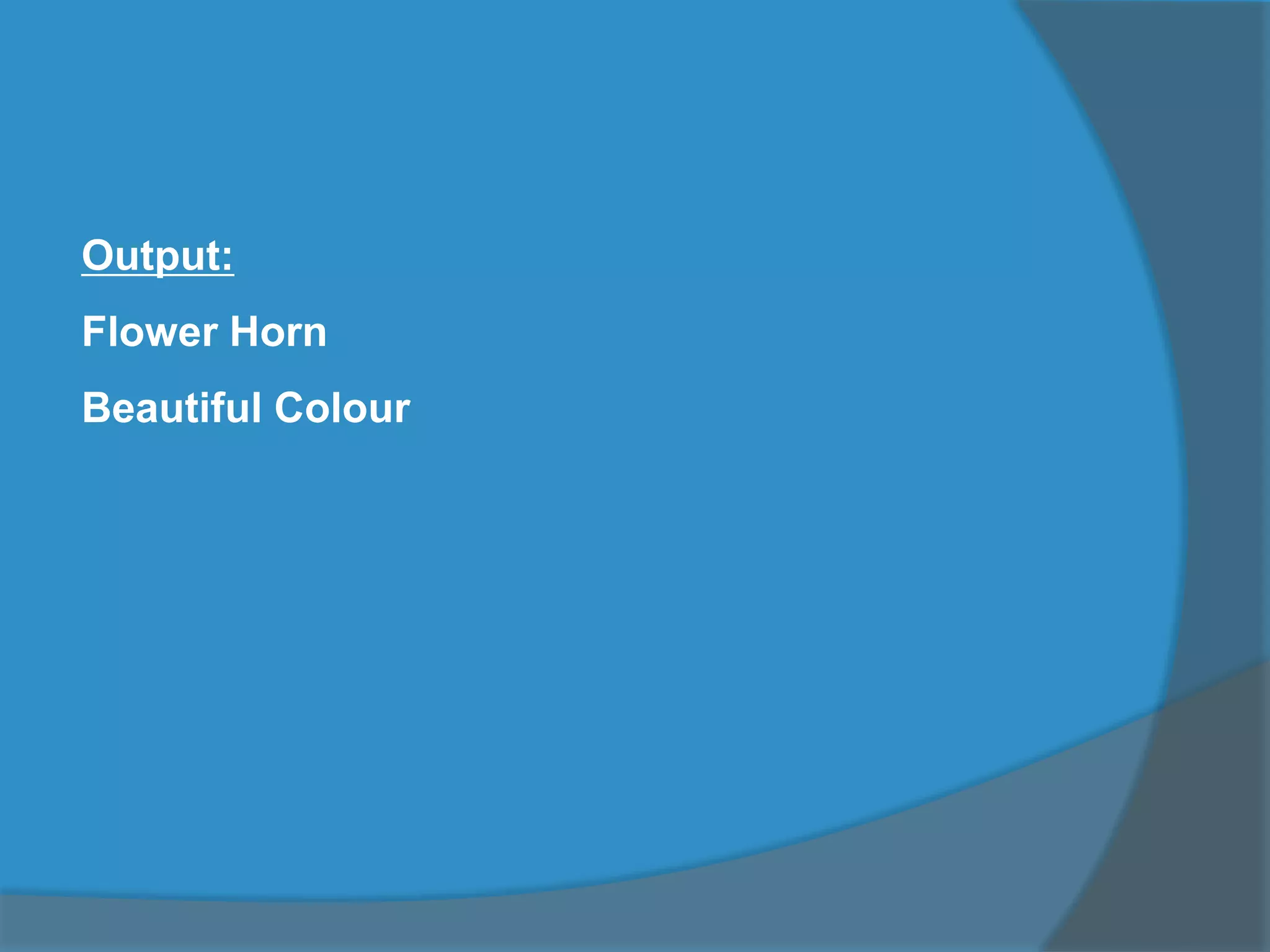The document defines classes and methods in Java.
It discusses:
1) The syntax for defining a class with modifiers, data declarations, and method definitions.
2) How a class can contain data declarations and method declarations to store information and perform behaviors.
3) The structure of a method including the header, parameters, and body.
4) How to define constructors, static methods, and overload methods in a class.
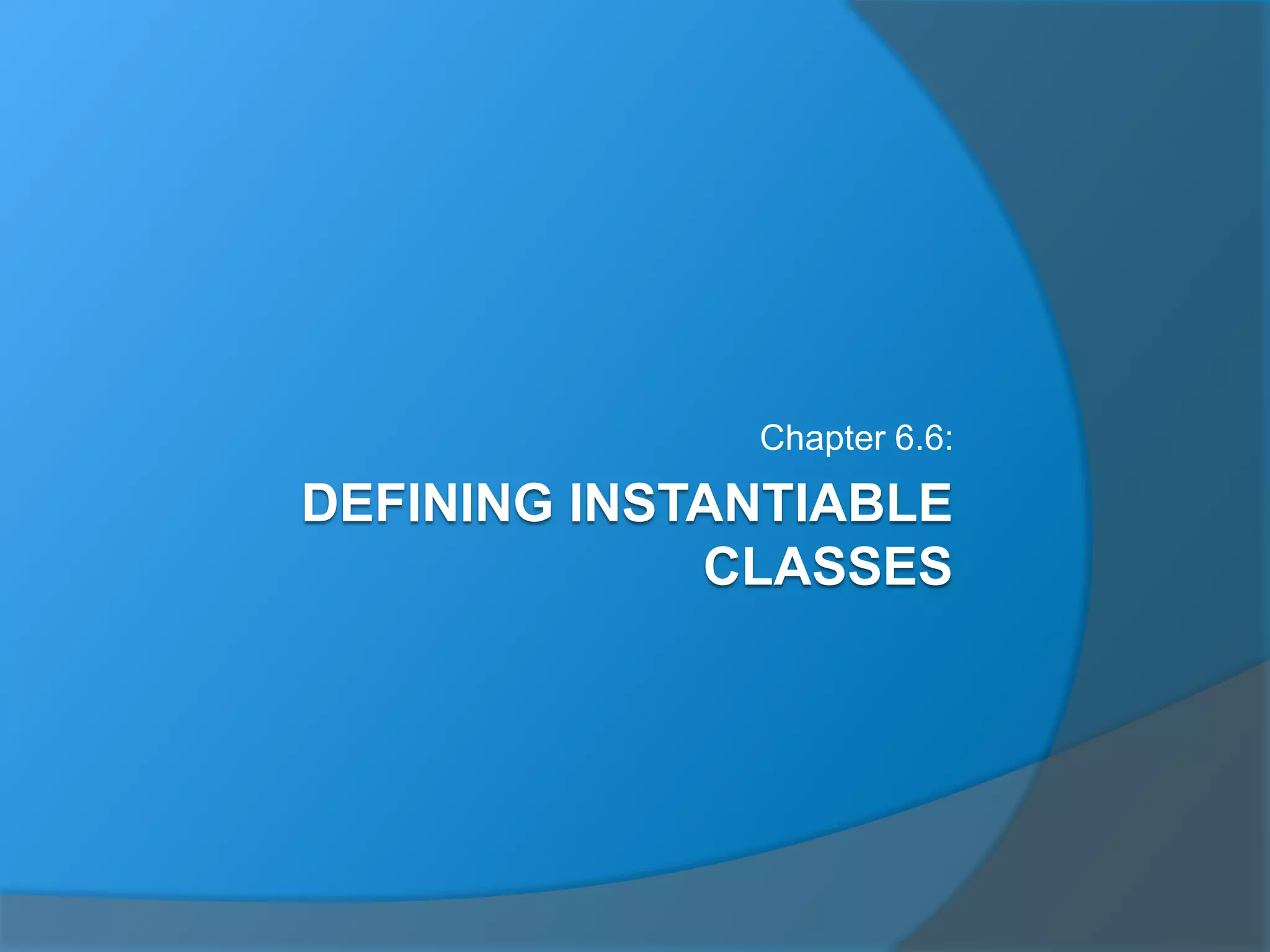

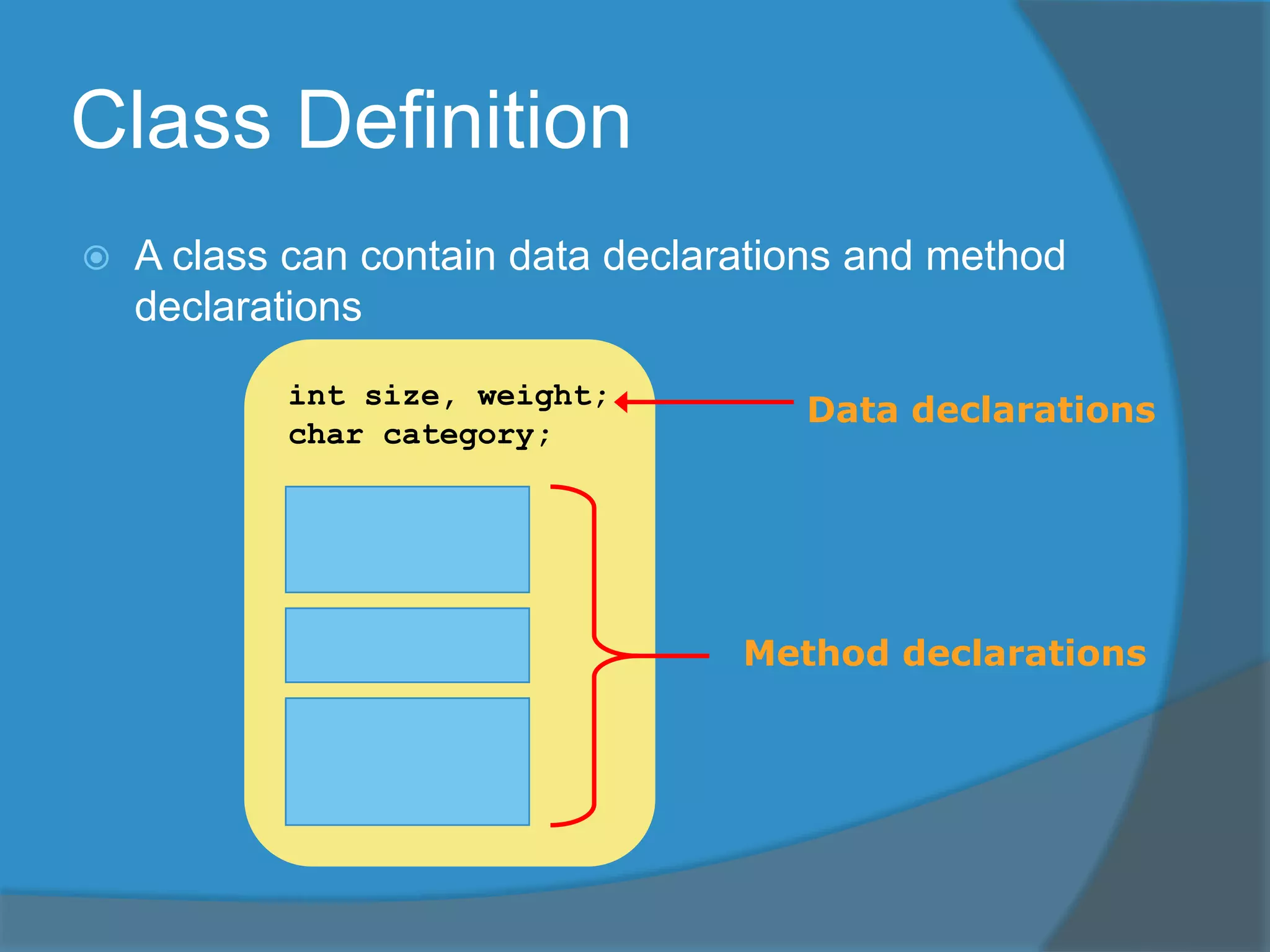
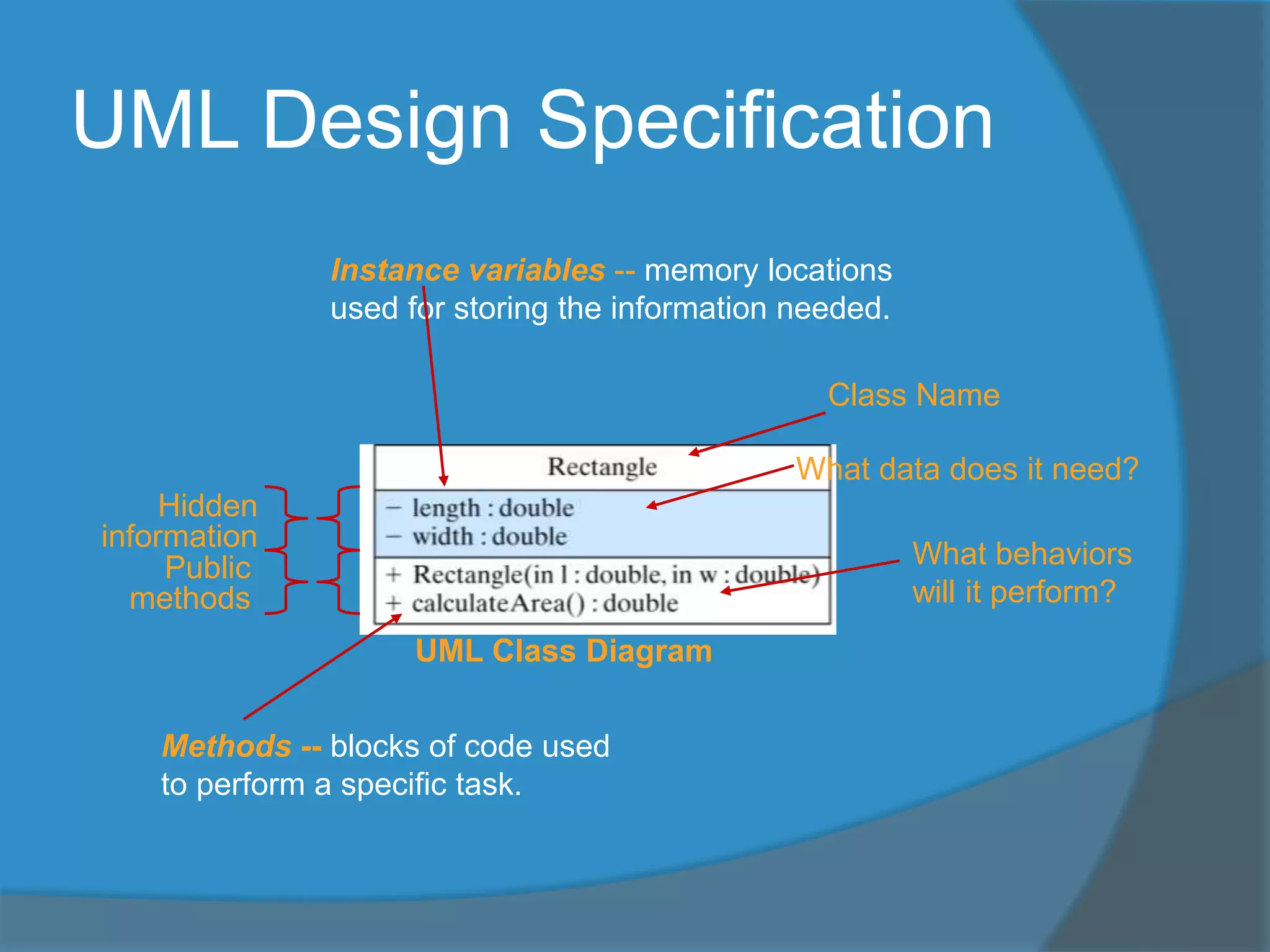
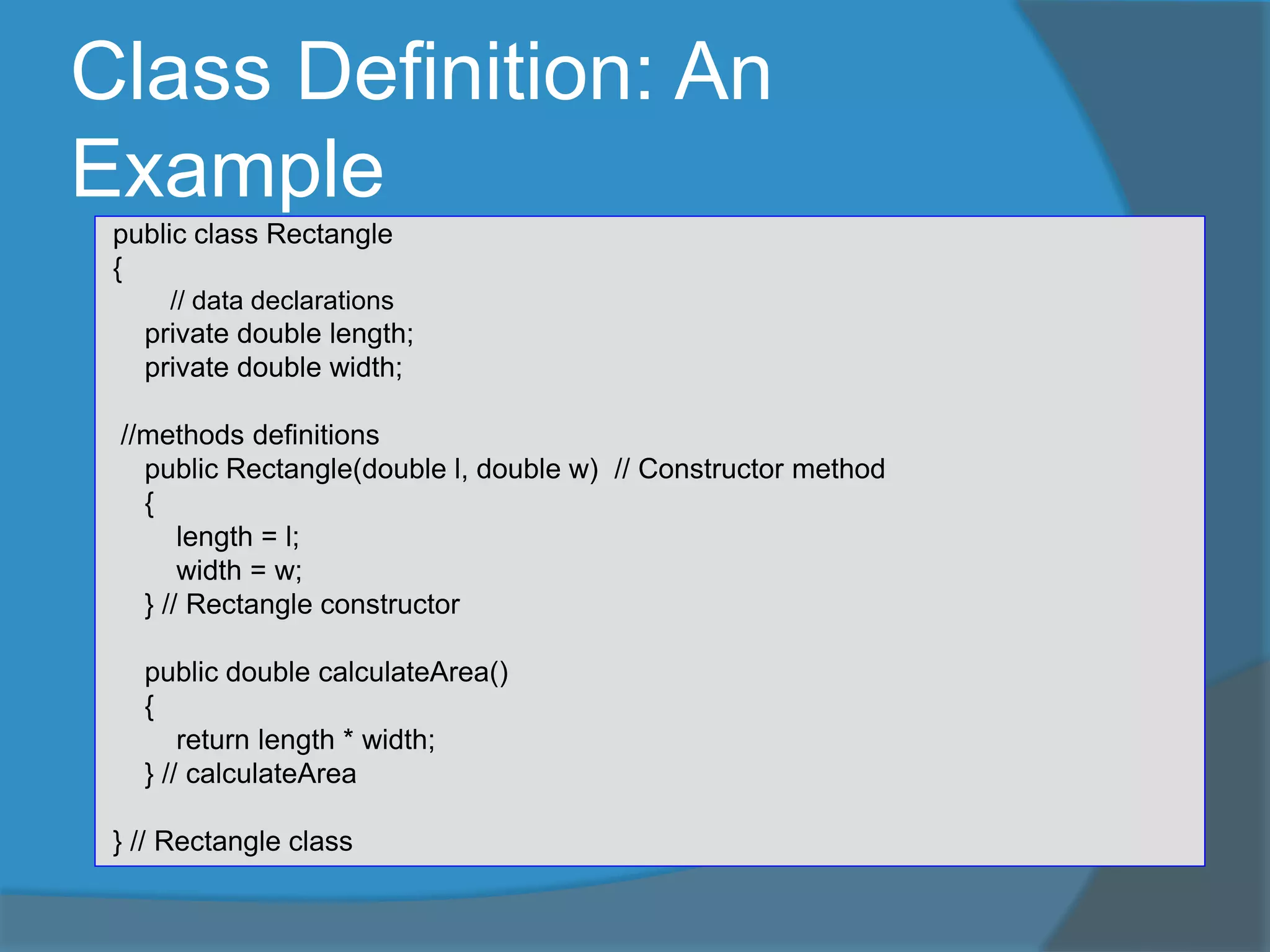
![Method Definition
public void MethodName() // Method Header
{ // Start of method body
} // End of method body
The Method Header
modifieropt ResultType MethodName (Formal ParameterList )
public static void main (String argv[ ] )
public void deposit (double amount)
public double calculateArea ( )](https://image.slidesharecdn.com/kwmmbwsqwkjbjioisyqz-140524210930-phpapp02/75/Chapter-6-6-6-2048.jpg)
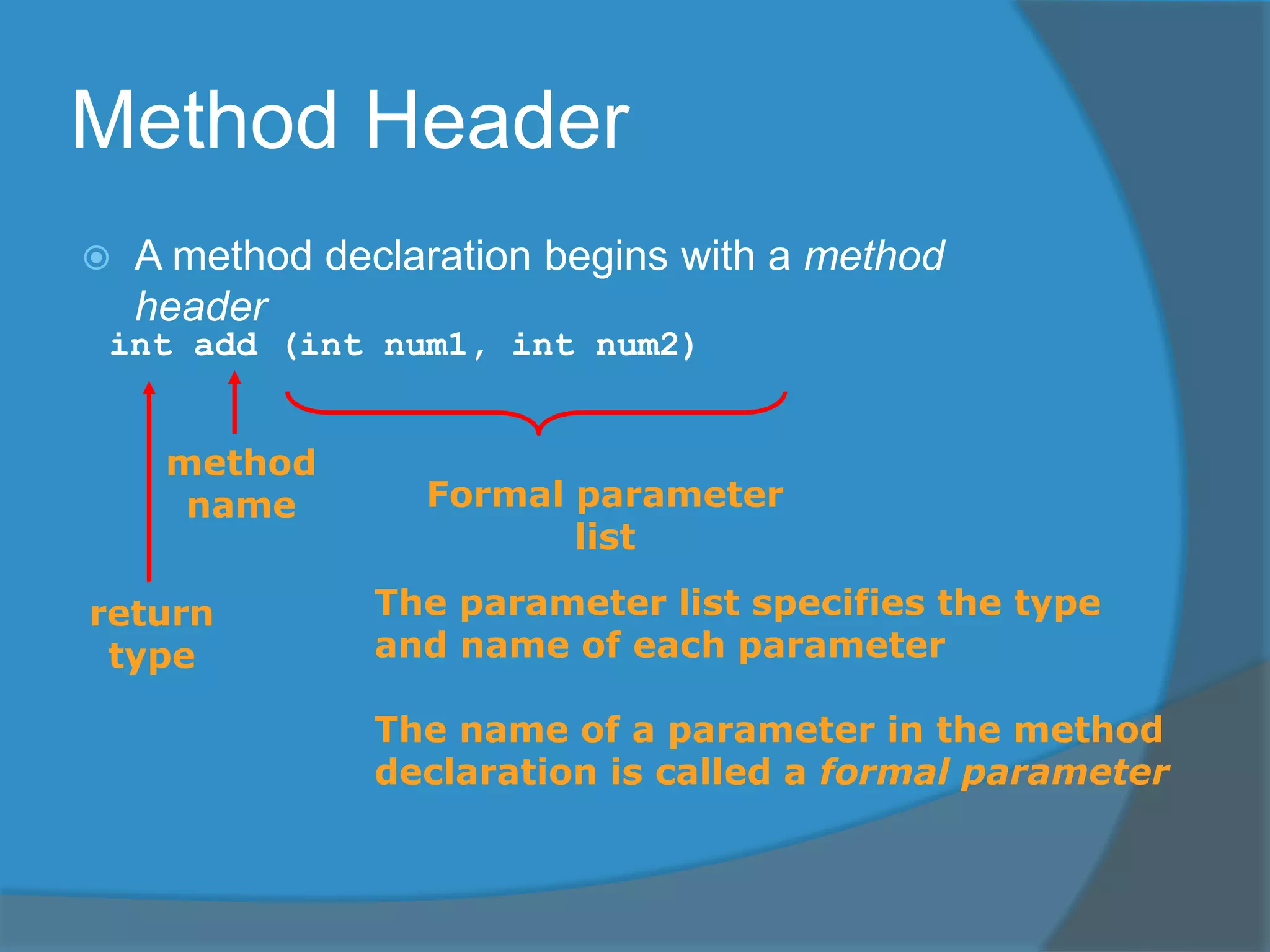
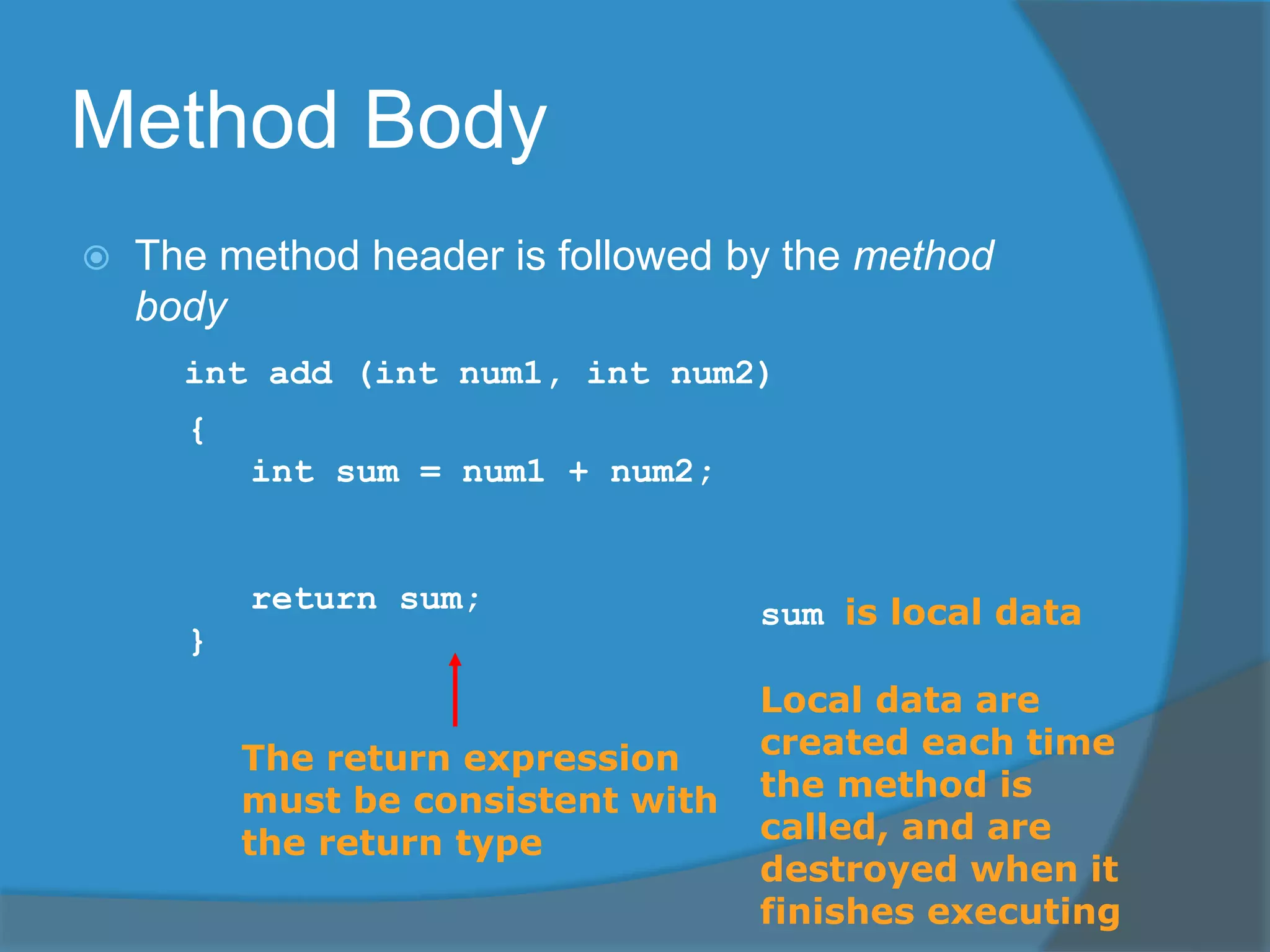
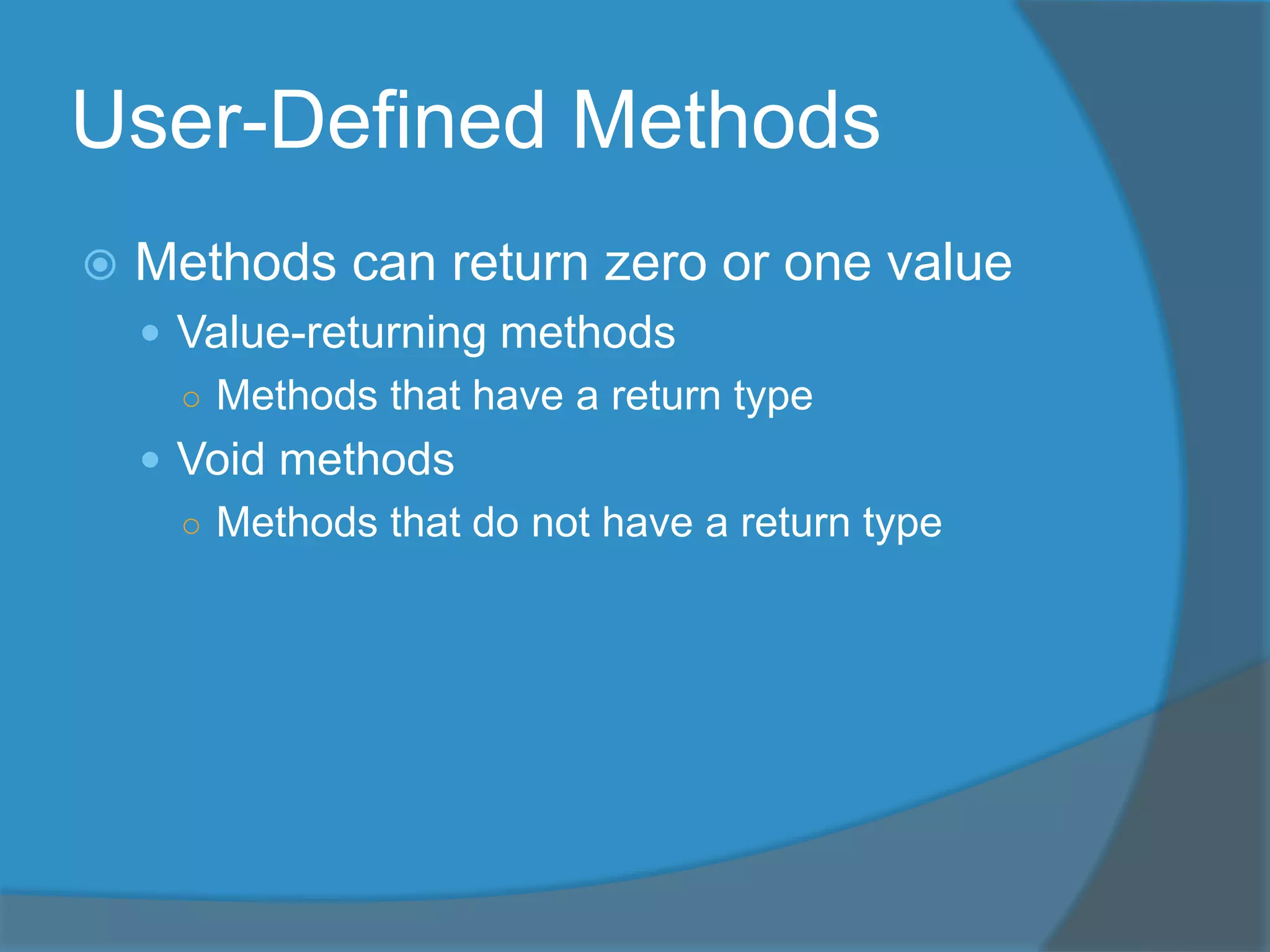
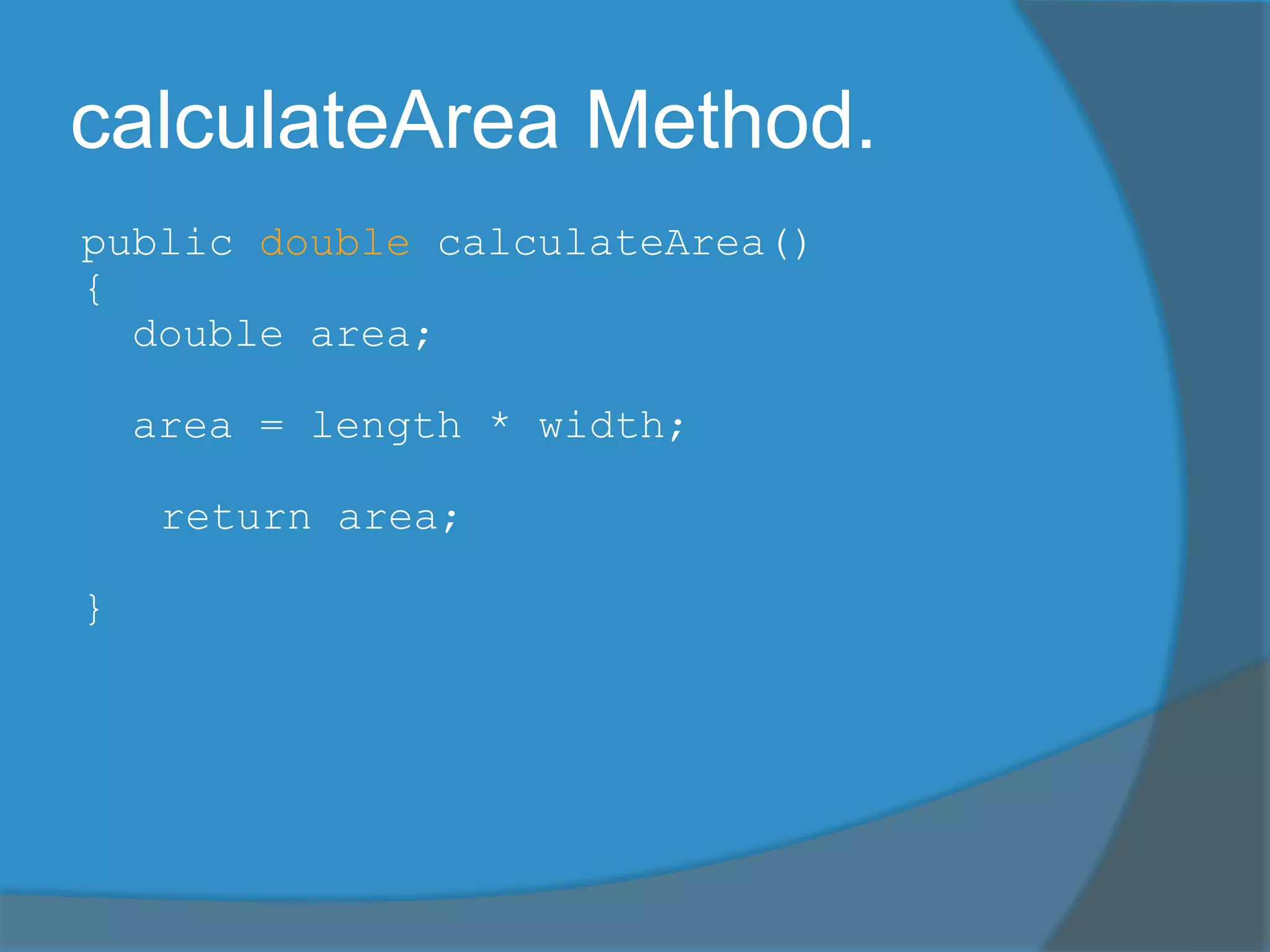
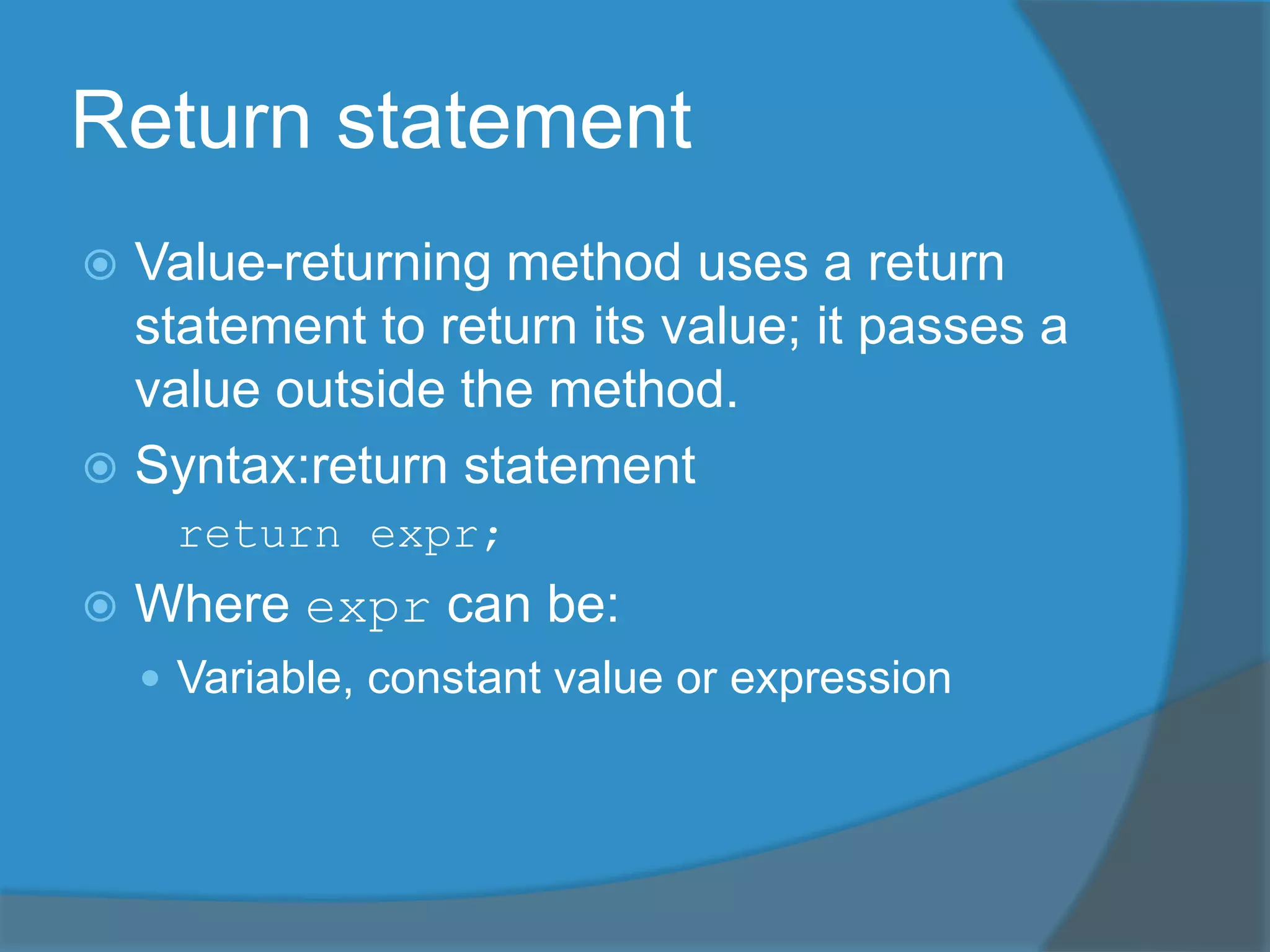
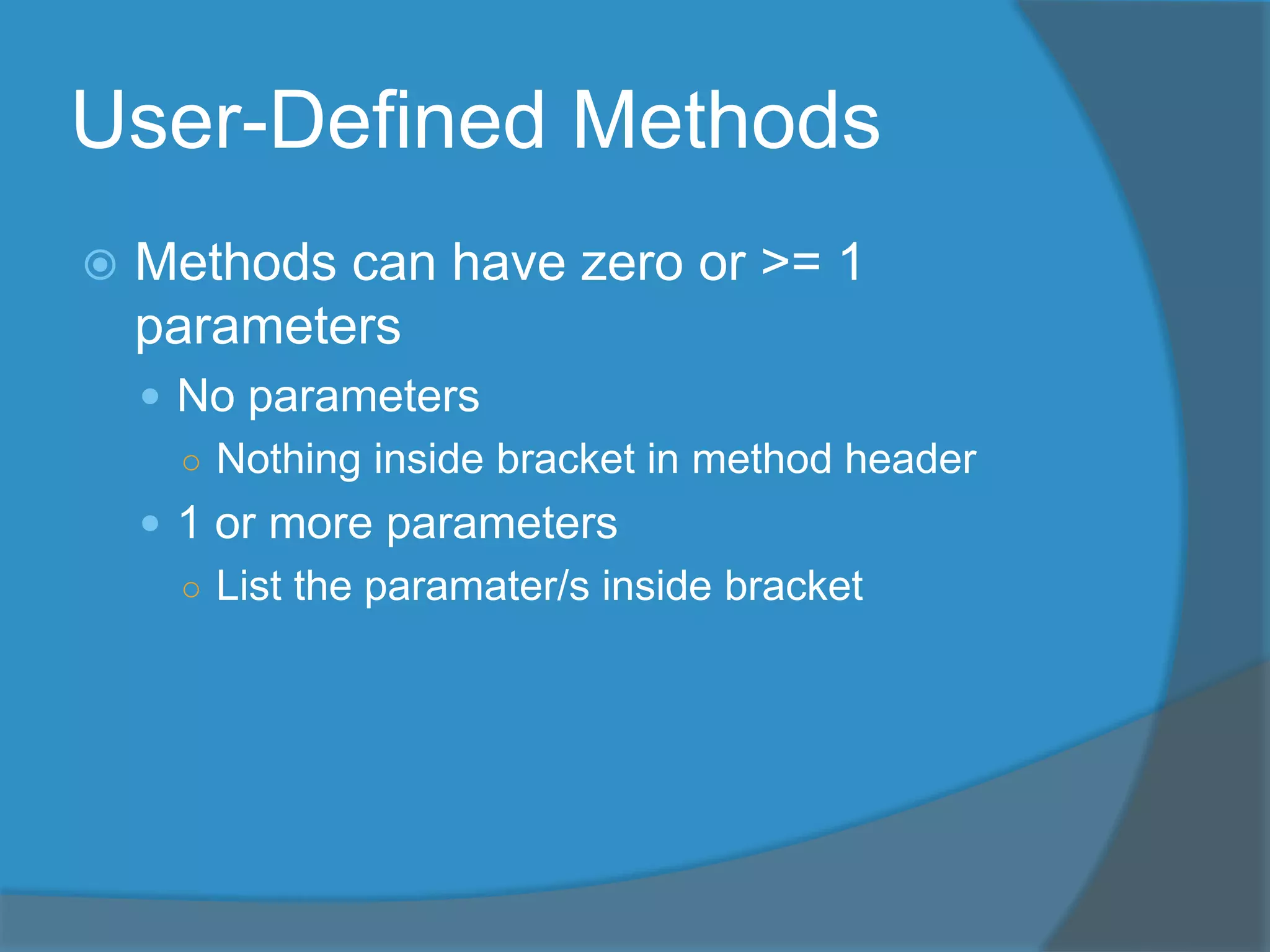
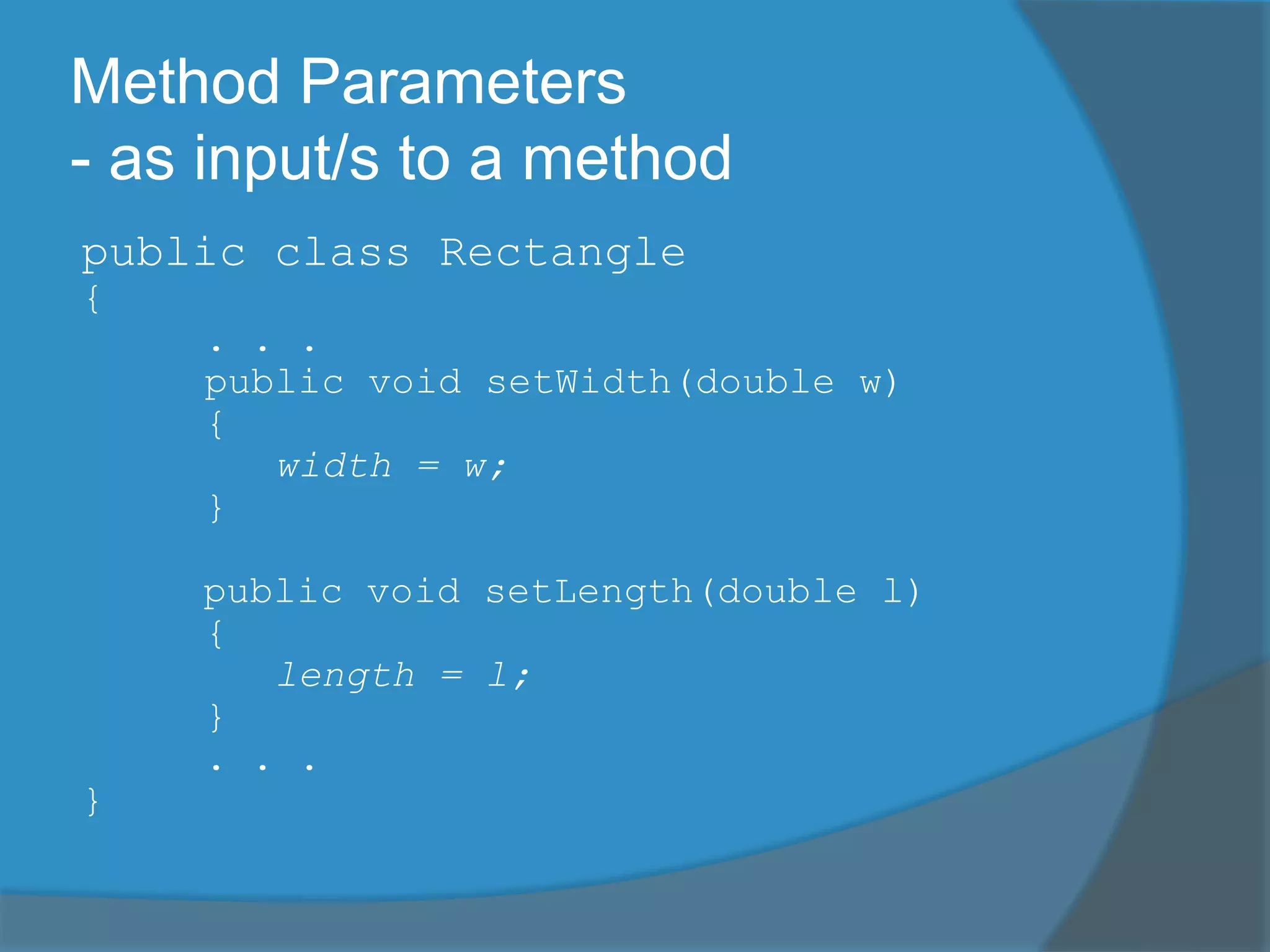
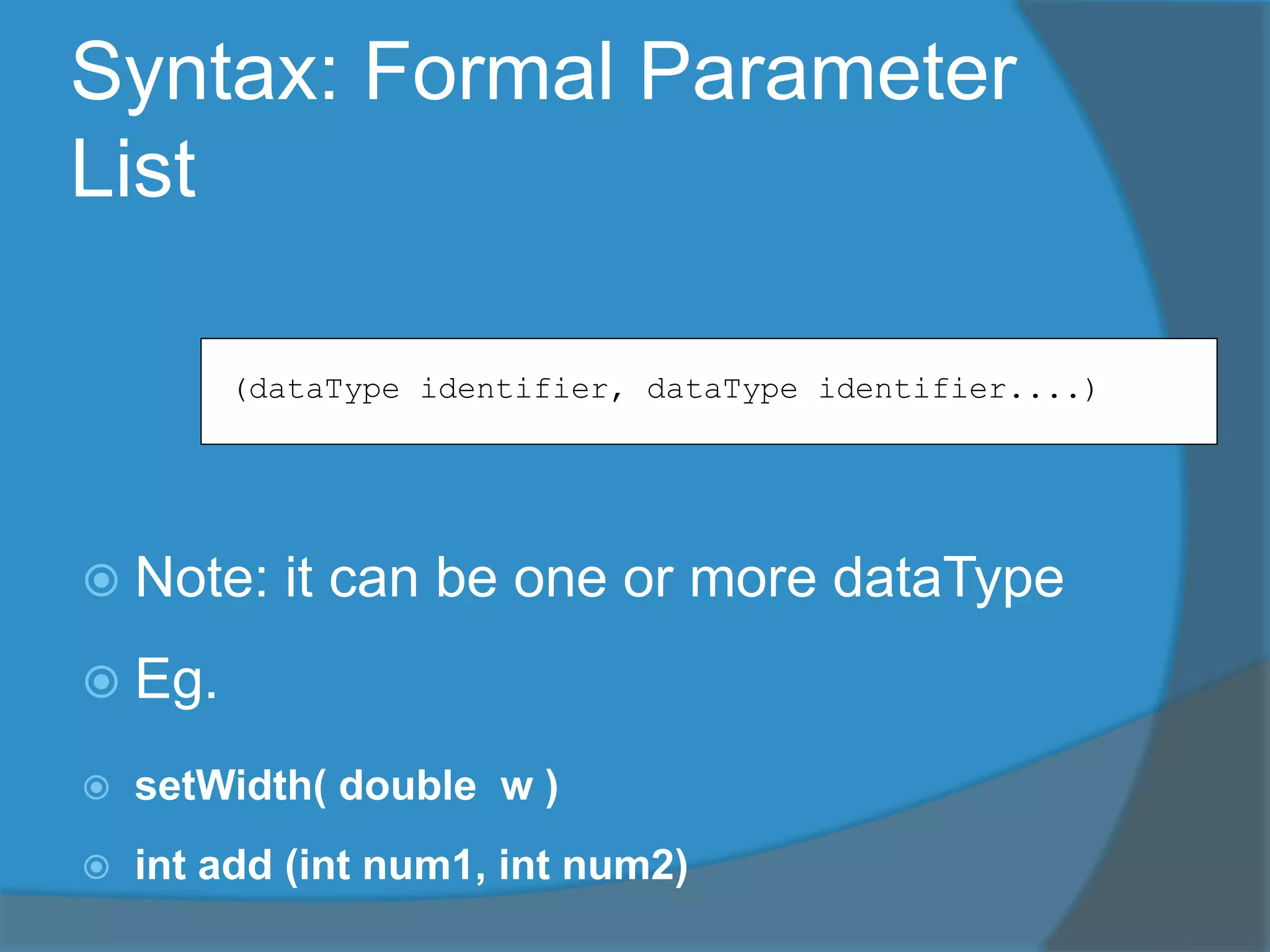
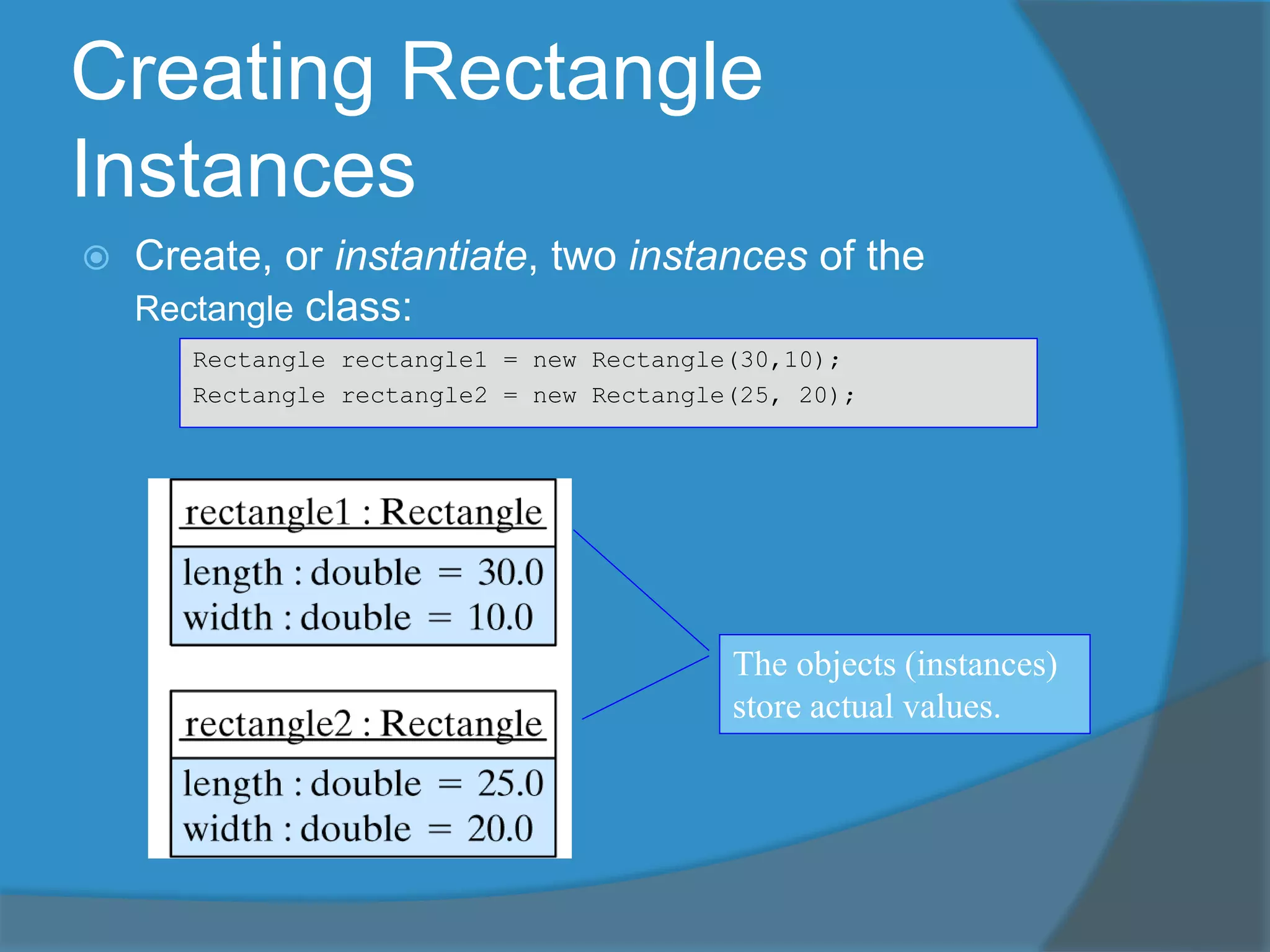
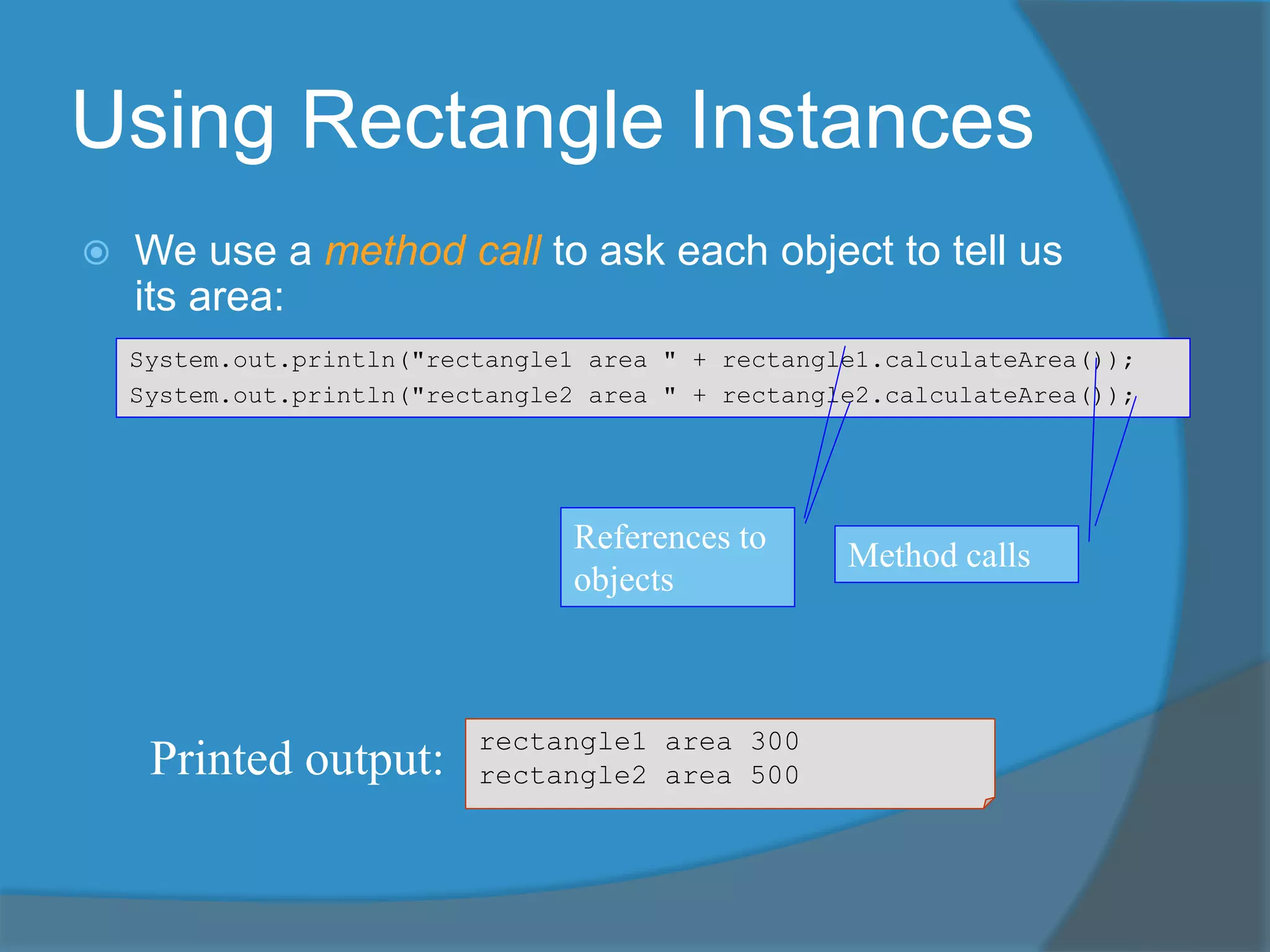
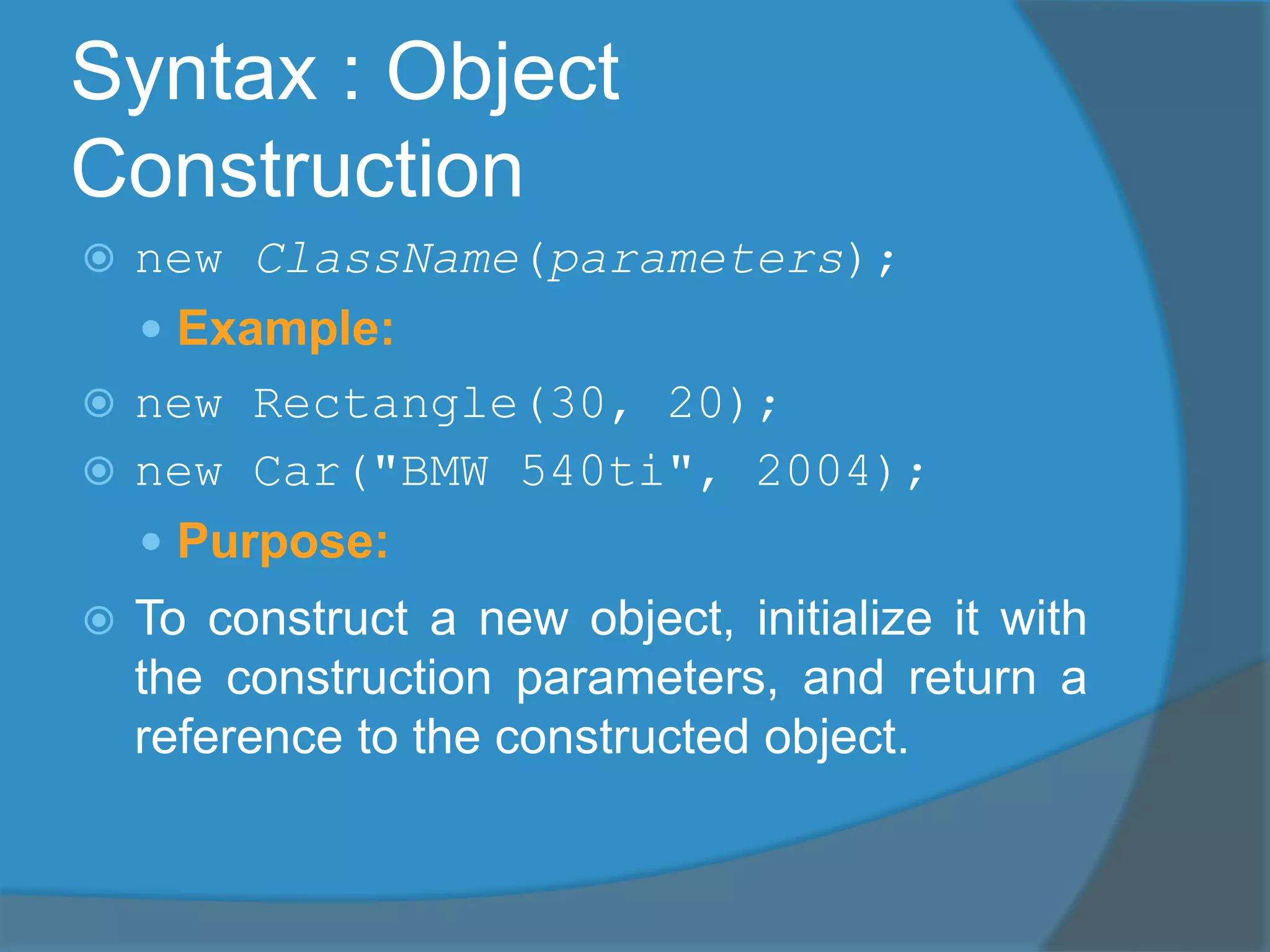
![The RectangleUser Class Definition
public class RectangleUser
{
public static void main(String argv[])
{
Rectangle rectangle1 = new Rectangle(30,10);
Rectangle rectangle2 = new Rectangle(25,20);
System.out.println("rectangle1 area " +
rectangle1.calculateArea());
System.out.println("rectangle2 area " +
rectangle2.calculateArea());
} // main()
} // RectangleUser
An application must
have a main() method
Object
Use
Object
Creation
Class
Definition](https://image.slidesharecdn.com/kwmmbwsqwkjbjioisyqz-140524210930-phpapp02/75/Chapter-6-6-18-2048.jpg)
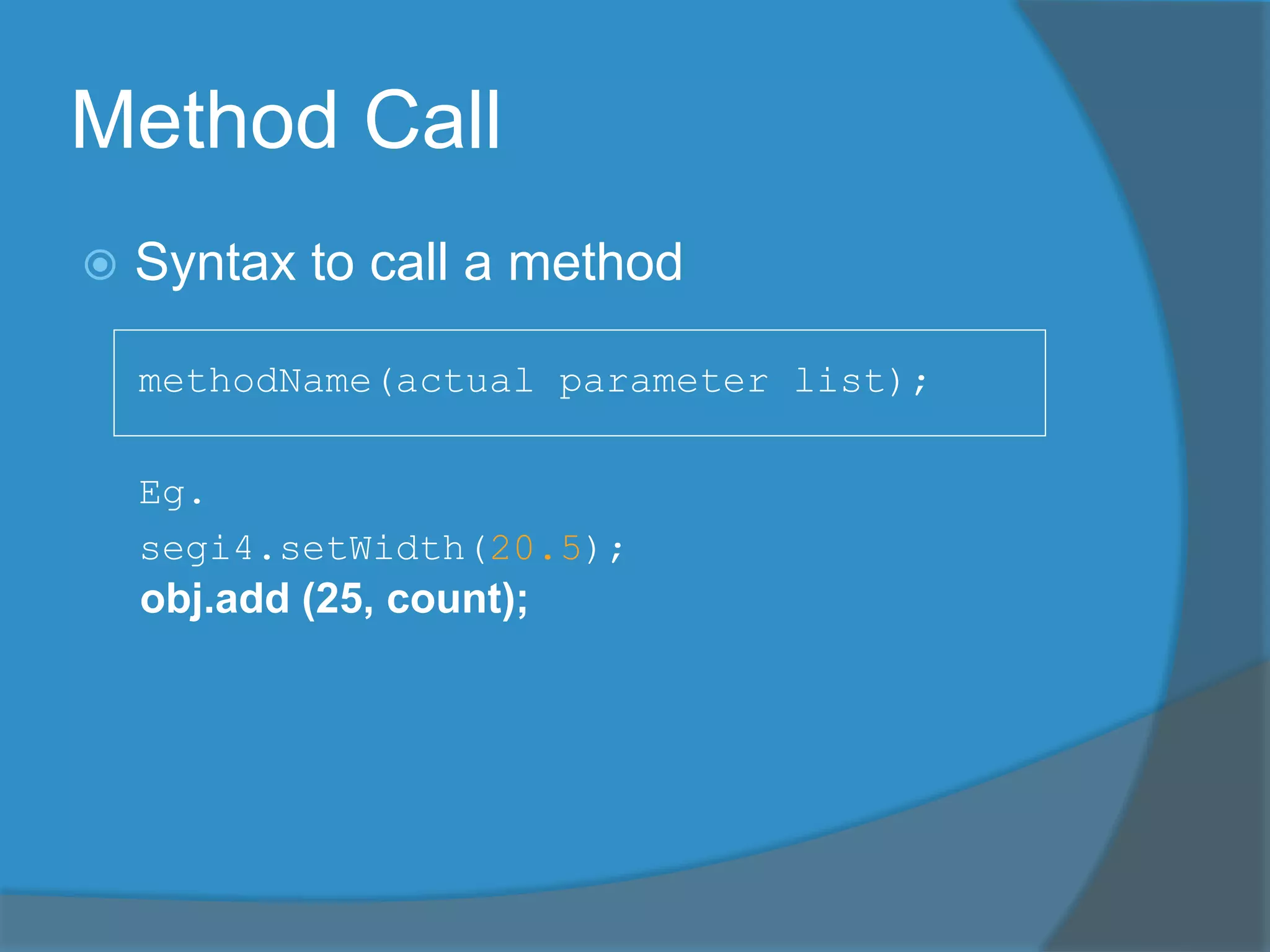

![Formal vs Actual
Parameters
public class RectangleUser
{
public static void main(String argv[])
{
Rectangle rectangle1 = new Rectangle(30.0,10.0);
System.out.println("rectangle1 area " +
rectangle1.calculateArea());
rectangle1.setWidth(20.0);
System.out.println("rectangle1 area " +
rectangle1.calculateArea());
}
}](https://image.slidesharecdn.com/kwmmbwsqwkjbjioisyqz-140524210930-phpapp02/75/Chapter-6-6-21-2048.jpg)
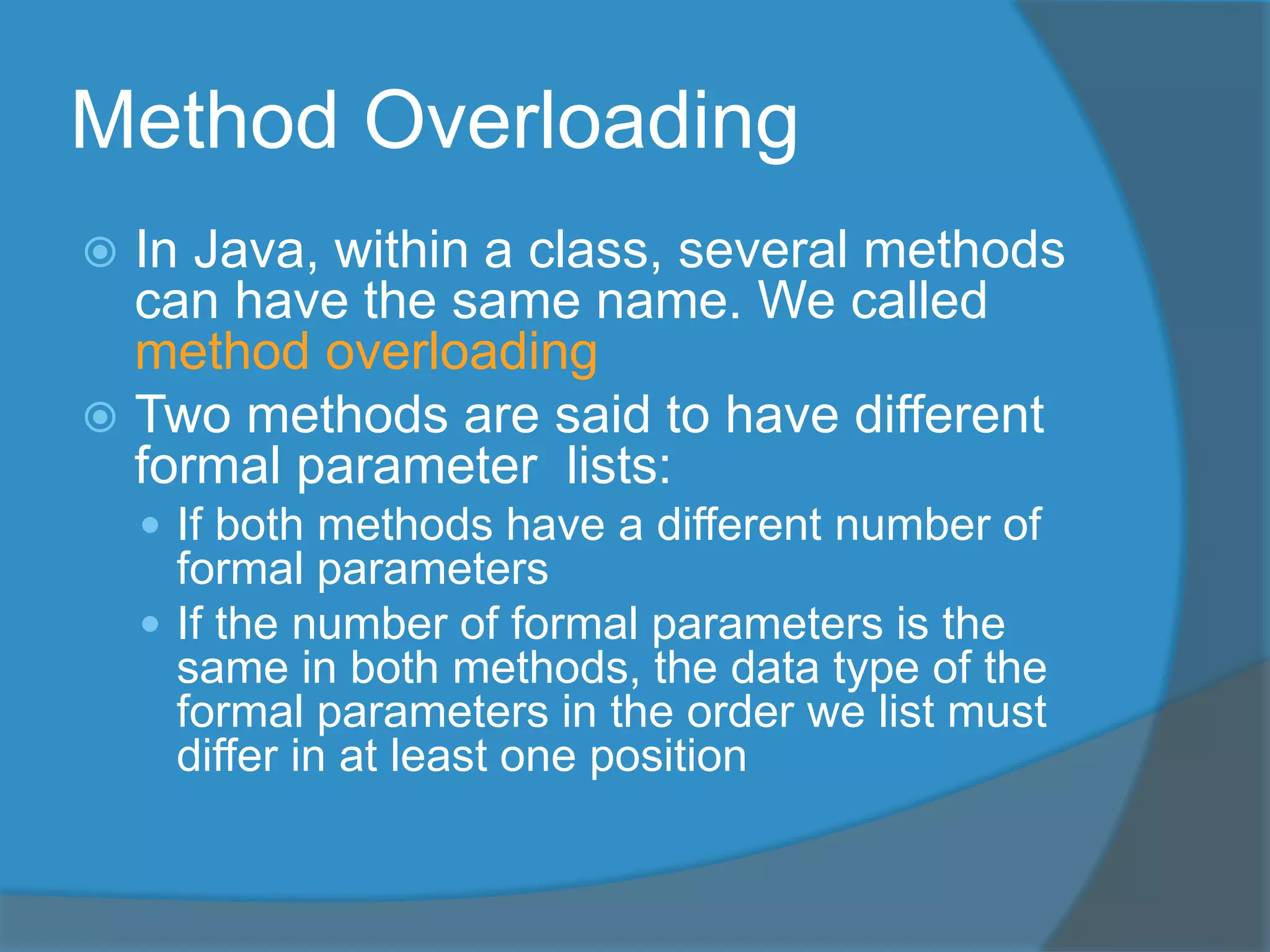
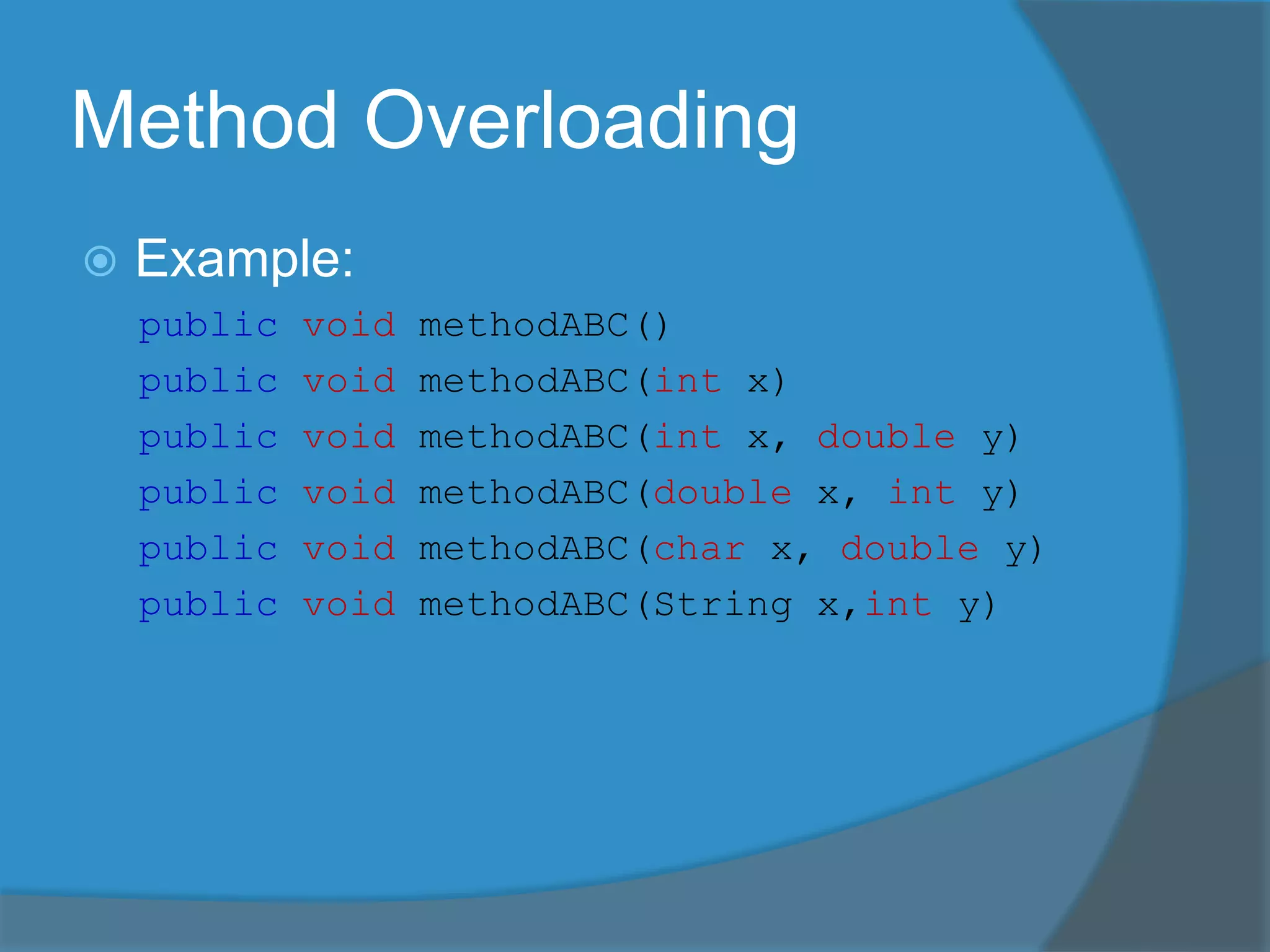
![Java code for overloading
public class Exam
{
public static void main (String [] args)
{
int test1=75, test2=68, total_test1, total_test2;
Exam midsem=new Exam();
total_test1 = midsem.result(test1);
System.out.println("Total test 1 : "+ total_test1);
total_test2 = midsem.result(test1,test2);
System.out.println("Total test 2 : "+ total_test2);
}
int result (int i)
{
return i++;
}
int result (int i, int j)
{
return ++i + j;
}
}](https://image.slidesharecdn.com/kwmmbwsqwkjbjioisyqz-140524210930-phpapp02/75/Chapter-6-6-24-2048.jpg)

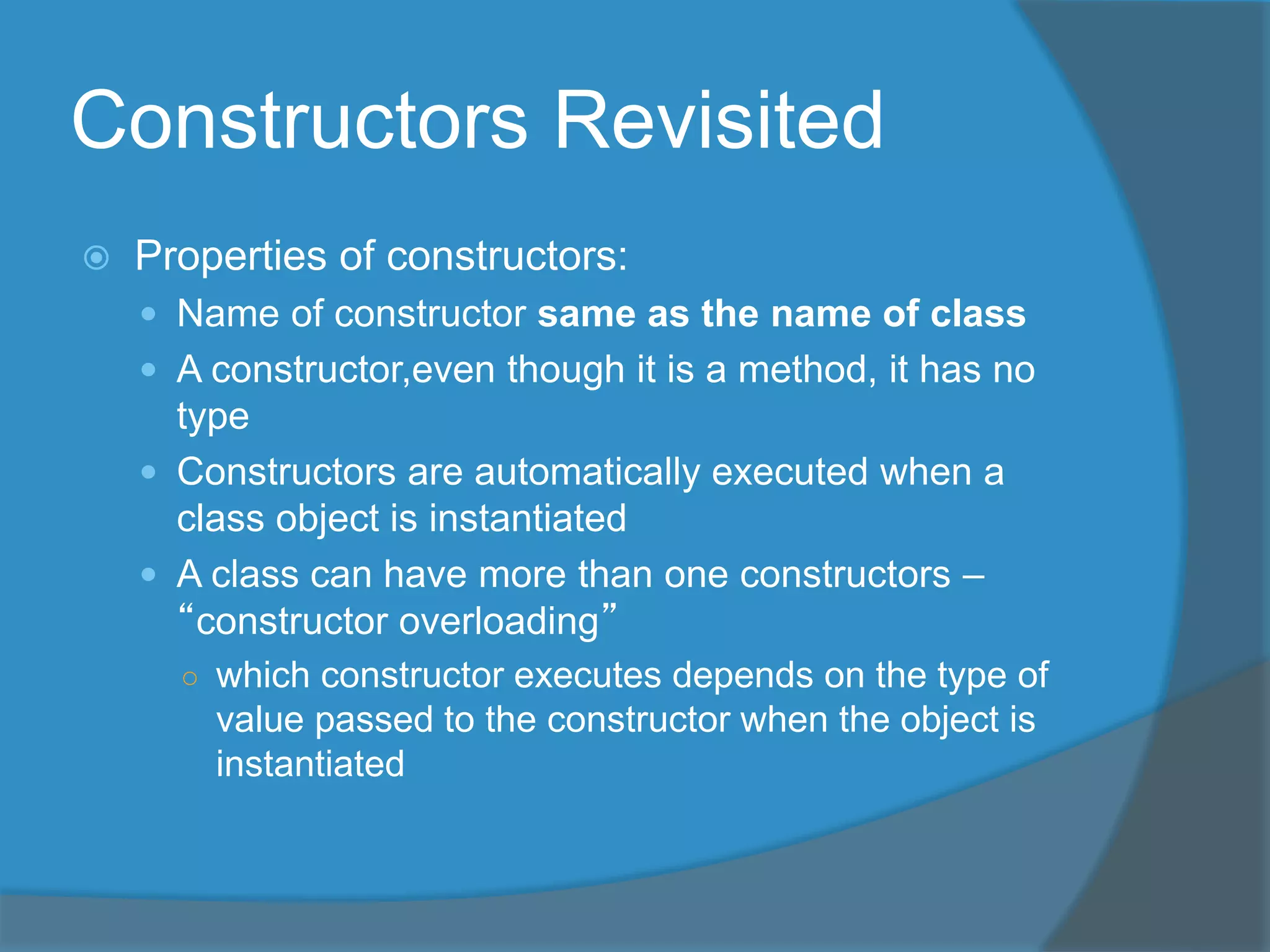
![Java code (constructor overloading)
public class Student
{ String name;
int age;
Student(String n, int a)
{ name = n; age = a;
System.out.println ("Name1 :" + name);
System.out.println ("Age1 :" + age);
}
Student(String n)
{
name = n; age = 18;
System.out.println ("Name2 :" + name);
System.out.println ("Age2 :" + age);
}
public static void main (String args[])
{
Student myStudent1=new Student("Adam",22);
Student myStudent2=new Student("Adlin");
}
}](https://image.slidesharecdn.com/kwmmbwsqwkjbjioisyqz-140524210930-phpapp02/75/Chapter-6-6-27-2048.jpg)
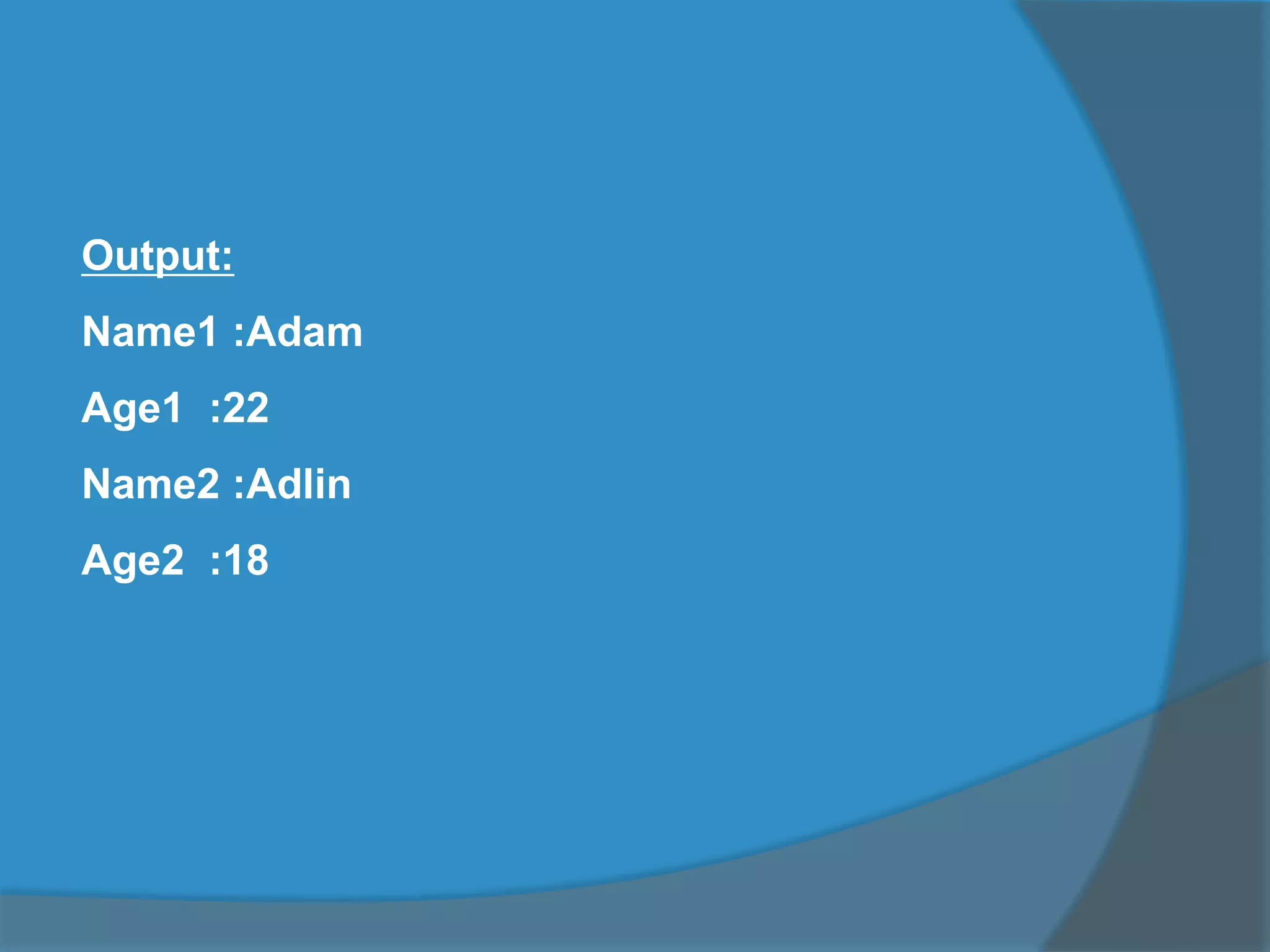
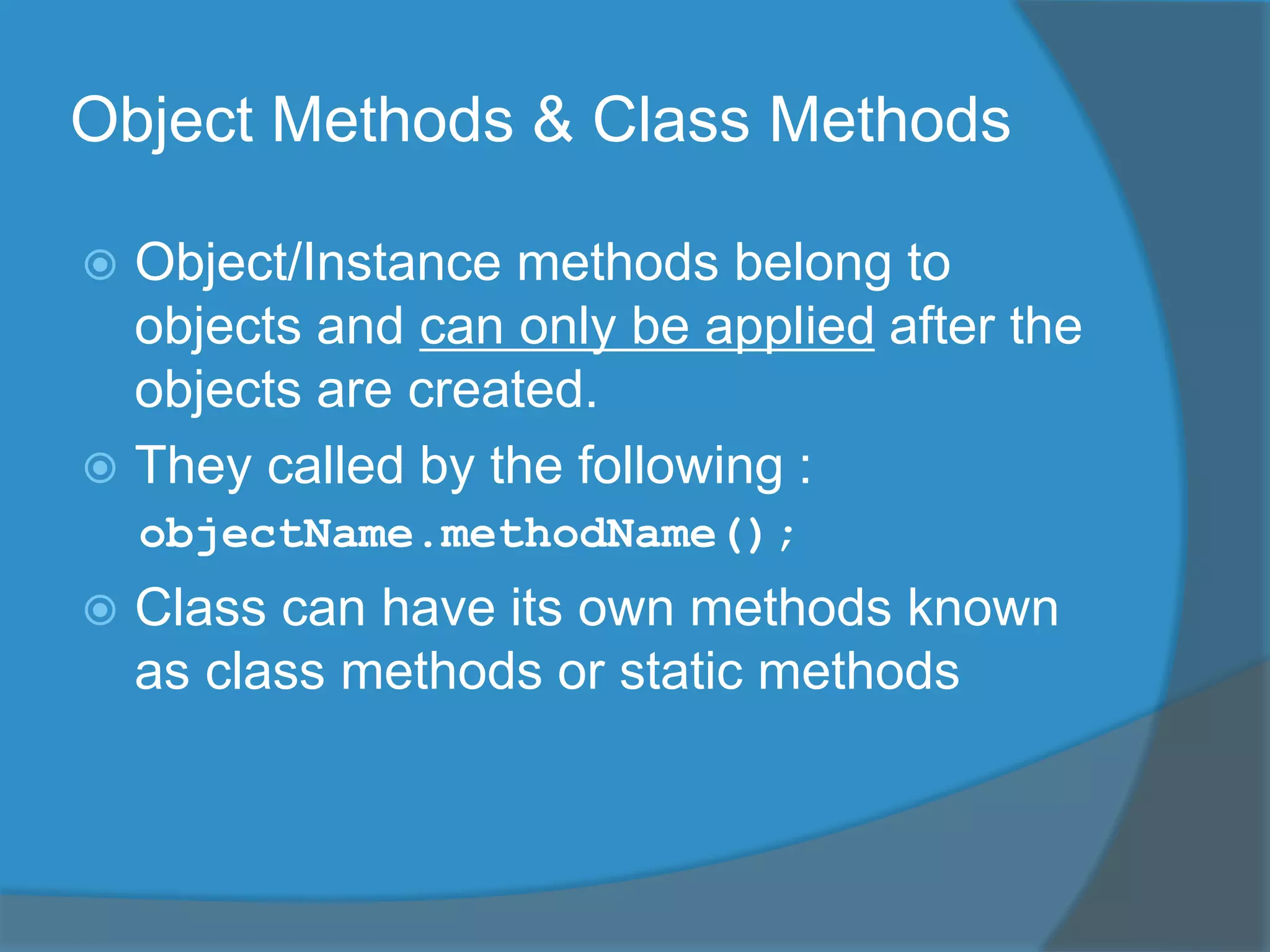
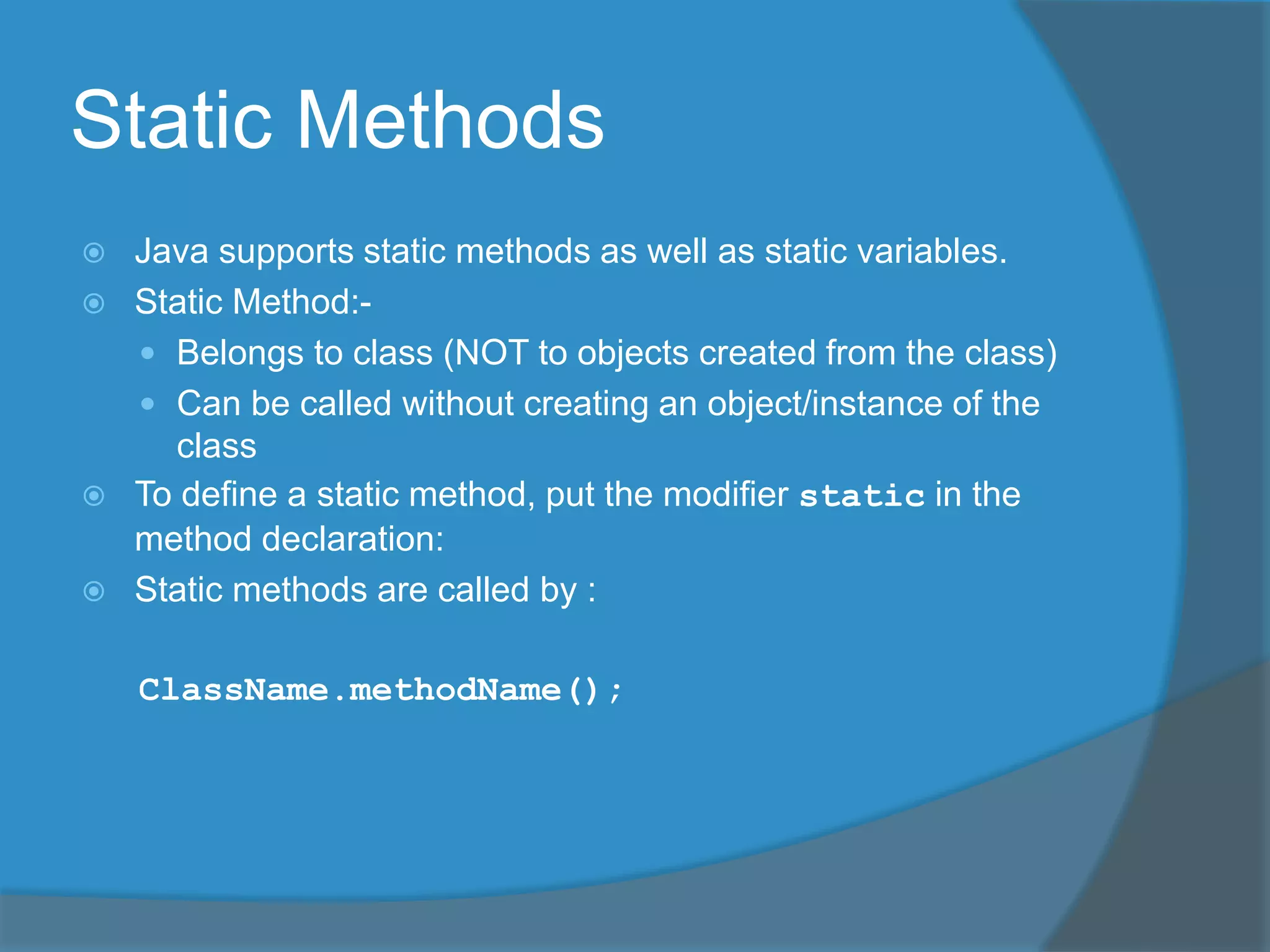
![Java Code (static method)
public class Fish
{
public static void main (String args[])
{
System.out.println ("Flower Horn");
Fish.colour();
}
static void colour ()
{
System.out.println ("Beautiful Colour");
}
}](https://image.slidesharecdn.com/kwmmbwsqwkjbjioisyqz-140524210930-phpapp02/75/Chapter-6-6-31-2048.jpg)
